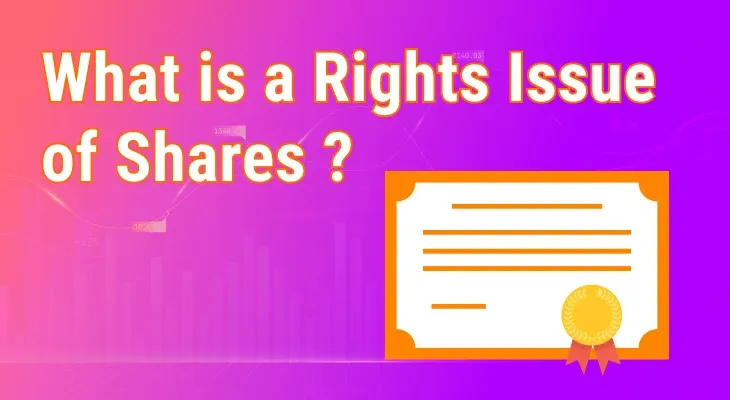
What is a rights issue?
As an investor, you need to know the different corporate actions a company can initiate. Among the different non-cash corporate actions possible, a rights issue is one of the most common. What is the rights issue of shares and why does a company opt for it? Here is everything you need to know.
In a rights issue, a company gives its existing shareholders the right to purchase more shares. Since the shareholders get to purchase shares directly from the company instead of the secondary market, the price of the shares is usually set lower than its current market price. The number of shares that an existing shareholder is eligible to apply for is dependent on the number of shares they hold.
Purchasing more shares through a rights issue is not mandatory. For instance, a shareholder who doesn’t wish to subscribe to the issue may choose to either let the right expire or transfer it to another shareholder.
Features of a rights issue
Now that you’re aware of the meaning of the rights issue, let’s take a quick look at some of the unique features of this non-cash corporate action.
A rights issue gives existing shareholders preferential benefits.
The existing shareholders only get the right and not the obligation to purchase more shares of the company.
The shares are generally offered at a discounted price compared to their current market price.
A rights issue is an inexpensive way for companies to gain access to capital, since they don’t have to pay any fees to underwriters or book-running lead managers (BRLMs).
A shareholder may choose to sell the rights to other investors through the exchange or via an off-market transaction.
If a shareholder chooses to let the rights expire, it can lead to a dilution in shareholder’s ownership.
The number of rights shares that shareholders can apply for is determined by the number of shares they currently hold.
Reasons for a rights issue
A company might opt for a rights issue for several different reasons. Here are some of them.
When a company needs additional funds but wants to keep the voting rights of existing shareholders intact
When other sources of funding like debt financing are unavailable or expensive
When a company wants to improve its debt-to-equity (D/E) ratio
Example of a rights issue
Let’s assume that a company announces a rights issue at a 1:4 ratio. This means that for every 4 shares owned by an existing shareholder, they’re entitled to purchase 1 share. Now, say the current market price of the same company is ₹1,280 per share, whereas the rights issue may be priced at ₹1,000 per share.
Given these parameters, if you currently own around 2,000 shares of the company, you are eligible for the rights issue at a 1:4 ratio. Here’s how this would work.
The number of shares you’re eligible for = 500 shares (2,000 shares ÷ 4)
The amount that you would have to pay = ₹5 lakh (500 shares x ₹1,000 per share)
The total number of shares that you would own after exercising the rights issue = 2,500 shares
Conclusion
A rights issue is beneficial for both the company and its shareholders. While the company gains access to capital via a more inexpensive channel, the shareholders get to enjoy a discounted price on their shares. That’s not all. Unlike a follow-on public offering (FPO), where the voting rights of existing shareholders get diluted, the voting rights remain intact if the rights issue is exercised.


